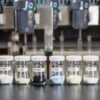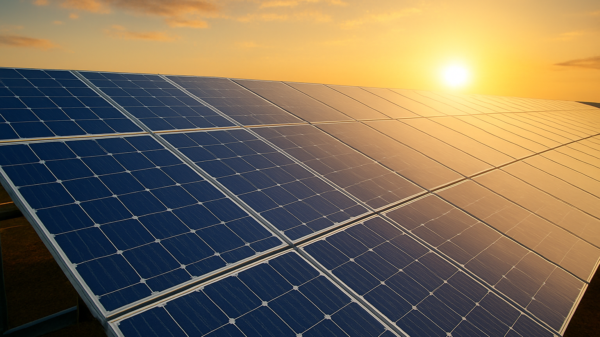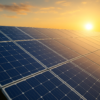Researchers in Denmark have found a way to convert sunlight into electricity using new windows that allow light to pass through while simultaneously generated power, and have set a new world record in efficiency doing so.
Researchers from the University of Southern Denmark combined organic solar cells with perovskite, achieving an efficiency of 12.3 per cent, matching the performance of commercial solar cells.
The international team also reports that the panels offer 30 per cent transparency. This innovation from the CitySolar project could help Europe meet its goal of making all new buildings nearly zero energy and fully decarbonising the building sector by 2050.
Transparent solar cell technology could be a break through for renewable energy by transforming skyscrapers and offices into power plants, turning their windows into solar panels.
Until now, transparent solar windows have not absorbed enough energy to generate the required electricity for a building, and the panels have not been transparent enough for use. The CitySolar project now claims to have overcome these issues.
“Transparent solar cells could be the next big step in building integrated energy solutions,” said Morten Madsen, a professor from the University of Southern Denmark.
“The large glass facades found in modern office buildings can now be used for energy production without requiring additional space or special structural changes… This represents a massive market opportunity.”
Furthermore, Madsen said that the two materials used in the cells remain highly affordable and could scale for commercial deployment.
Read more: B2Gold’s solar plant expansion slashes heavy fuel oil use by 20M litres
Read more: Japanese solar cell maker TOYO up 86% on major supply contract
Multiple EU countries are working with solar
When added to the organic solar cell, the perovskite layer absorbs near-ultraviolet light, while the cell absorbs near-infrared light. Madsen explained the tandem solar cell captures energy from the infrared and ultraviolet parts of sunlight, leaving visible light unaffected.
This enables new efficiency standards for semi-transparent solar windows. He also noted that the two materials are highly affordable, making the technology well-suited for large-scale commercial deployment.
The project is presently between the proof-of-concept and prototype stages in terms of development. The team has secured nearly €4 million in funding from the EU. Furthermore, it is now in discussions with industry partners to scale up production of the see-through solar panels.
Several EU projects are advancing transparent solar technology.
The IMPRESSIVE project develops fully transparent photovoltaic devices with 14 per cent efficiency. This initiative focuses on making windows generate power without losing transparency.
Meanwhile, the VALHALLA project works on improving the stability and efficiency of lead-based perovskite solar cells. The team aims to exceed 26 per cent efficiency and ensure the cells last for over 25 years.
Meanwhile, the Laperitivo project is enhancing the manufacturing of large-area, stable perovskite solar modules. Their goal is to reach 22 per cent efficiency in opaque panels and 20 per cent in semi-transparent ones.
This project plans to scale production for widespread use. Together, these initiatives contribute to making transparent and semi-transparent solar cells more viable for large-scale deployment across Europe. Each project plays a crucial role in advancing the energy transition by making buildings more energy-efficient and sustainable.
joseph@mugglehead.com












